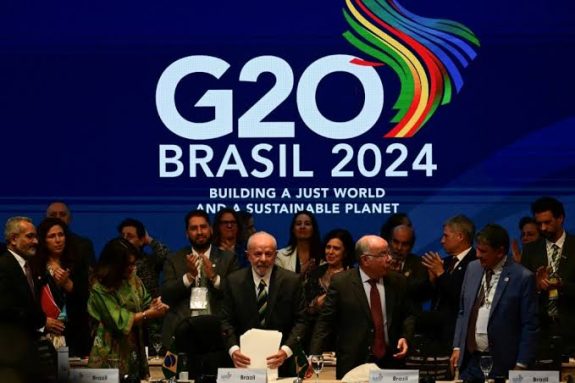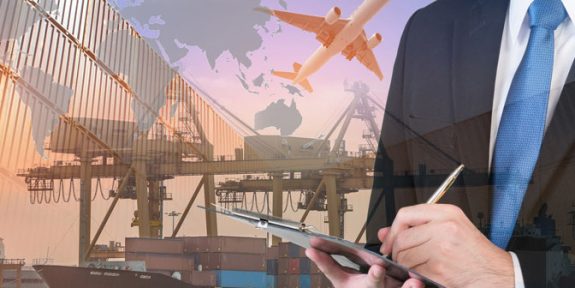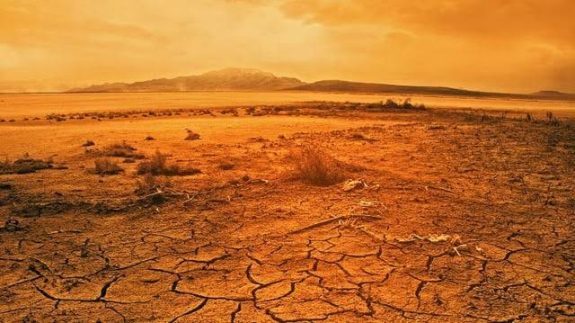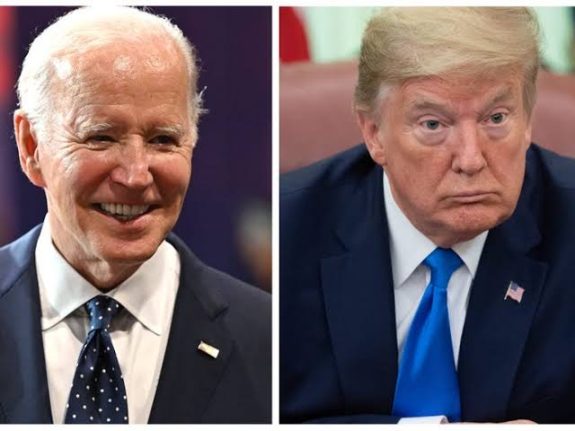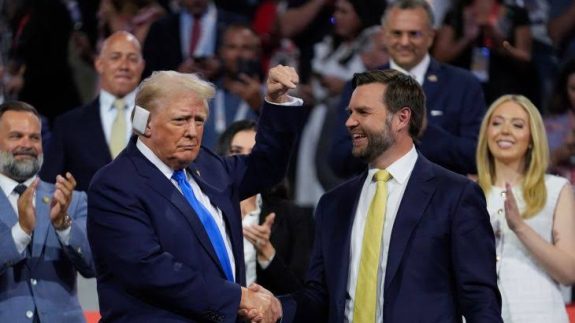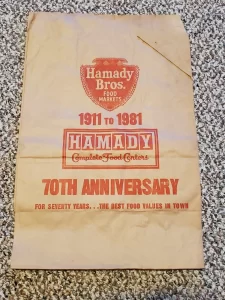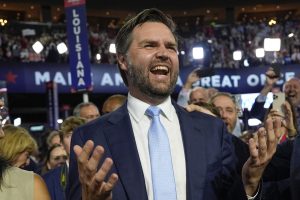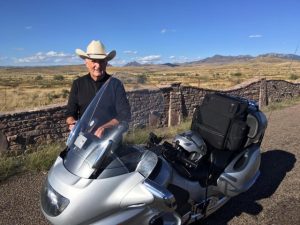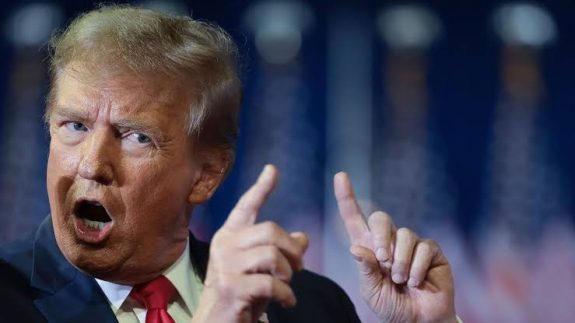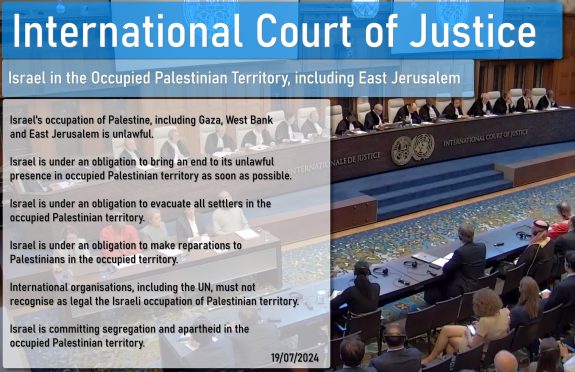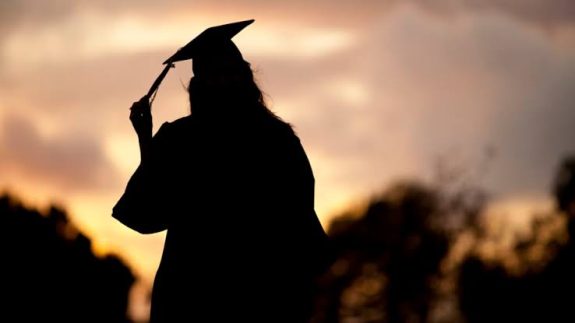By Tess Lawrence
America is one President down.
Joe Biden has withdrawn from the presidential race.
His demise was brought about not by a sniper’s bullet, but by assassins of another kind in both insidious and ignominious ways.
Cognitive impairment is one thing but this octogenarian’s past months in office reflect more shame on others, for their incompetence and merciless mismanagement of their candidate’s presidential campaign and obvious impairment, enacted on the world stage and promulgated in the media and of course, by his nemesis seeking a second trashing of the Oval Office, former President, Donald J. Trump.
Biden skewered on his rusty sword
The intransigent Joe Biden was skewered upon his rusty sword; publicly humiliated into drinking from a chalice long poisoned by frenemies within his own Democratic Party, clearly a party in disarray to such an extent that it has debased the status and standing of the Office itself, compromising the security of the nation.
Hitherto, Senator Biden’s political legacy was that of a devoted servant to his country, leading up to the Obama vice-presidency and later, trouncing the incumbent Trump and depriving him of a second term, sending him into an incandescent tantrum and incendiary rage with a personal and palpable hatred of Biden that festers to this day.
Cowardly, unworthy backroom entreaties by some Dems for Biden to stand down
Despite often cowardly and unworthy backroom entreaties to stand down, Biden would not go quietly into what he saw was a dark and bleak night for him. He was adamant he wanted to finish the job he’d started and in fairness, the job he started was pretty good, especially considering the chaos bequeathed to him by Trump’s disastrous vainglorious and farcical nepotistic regime.
Biden’s increasing incapacity and frailty raised questions about who was left running the country let alone the Administration. There was a categoric lack of leadership by the elected occupant in The White House. His diminishing grasp on reality was becoming dangerous.
“Lights on but no-one’s home”
To quote a helpful Australian saying, “the lights are on but no-one’s home.”
Biden has squandered much of his legacy by not withdrawing from the race earlier and by his own free will.
If he had stood down as President, Veep Kamala Harris would have been inducted and gone head-to-head with Trump as President on Tuesday, November 5th. America would at least have experienced a few months of a Harris presidency and getting to know her.
Trump has never lost the opportunity to kick Biden when he was down. Even now. It’s called politics 101. He’s ridiculed Biden time and again. Let us not forget Trump’s mocking of those with a disability.
Now that Biden has acquiesced and announced he’s quitting the race, there is some sadness, according to one insider, that it has come to this.
King Lear makes way for King Leer
After much conjecture, Joe Biden is withdrawing from the race. Here is the link to his tweet with the announcement.
At the time of writing, the announcement had not been placed on The White House website. This could mean that only Biden’s inner circle knew of his intent and suggests fears that a website posting could facilitate media leaks.
For those who are not on X (Twitter) here’s the text of Biden’s statement that he’s withdrawing from the presidential race.
My Fellow Americans,
Over the past three and a half years, we have made great progress as a Nation.
Today, America has the strongest economy in the world. We’ve made historic investments in rebuilding our Nation, in lowering prescription drug costs for seniors, and in expanding affordable health care to a record number of Americans. We’ve provided critically needed care to a million veterans exposed to toxic substances. Passed the first gun safety law in 30 years.
Appointed the first African American woman to the Supreme Court. And passed the most significant climate legislation in the history of the world. America has never been better positioned to lead than we are today.
I know none of this could have been done without you, the American people. Together, we overcame a once-in-a-century pandemic and the worst economic crisis since the Great Depression. We’ve protected and preserved our Democracy. And we’ve revitalized and strengthened our alliances around the world.
It has been the greatest honor of my life to serve as your President. And while I have intended to seek reelection, I believe it is in the best interest of my party and the country for me to stand down and focus solely on fulfilling my duties as President for the remainder of my term.
I will speak to the Nation later this week in more detail about my decision.
For now, let me express my deepest gratitude to all those who have worked so hard to see me reelected. I want to thank Vice President Kamala Harris for being an extraordinary partner in all this work. And let me express my heartfelt appreciation to the American people for the faith and trust you have placed in me.
I believe today what I always have: that there is nothing America can’t do – when we do it together. We just have to remember we are the United States of America.
It should be noted that in his initial statement, whilst Biden thanks Harris, he does not endorse her. Minutes later, he endorses her in a second social media post.
Let us do a bit of meandering ourselves.
Remember this, fellow earthlings?:
“I could stand in the middle of Fifth Avenue and shoot somebody, and I wouldn’t lose any voters, OK?”
No, it ain’t okay.
This messianic lawless boast spewed out of the big mouth of then Republican caucus frontrunner Donald Trump in 2016 whilst on the hustings in Iowa and with no sense of irony delivered to a campaign stop audience at Dordt Christian College in Sioux Center.
Consider the sickening words as well as the speaker. Trump’s bloated ego has no boundaries, we know that. But on another level this is a statement that shows utter contempt for his inferred slavish and apparently mindless voters who would vote for him regardless if he murdered somebody/committed a capital offence.
The violent imagery provoked by Trump is indicative of his lexicon and lingual subtext that power equals force equals true leadership, its quest enshrined in the survival of the politically fittest.
The quote also reflects Trump’s neediness to be loved by the masses, ergo his voters, and for him to test their love and loyalty by fighting for him no matter what.
Trump’s Fifth Ave ‘shooting’ quote linked to January 6th insurgency
We can draw a straight line from Trump’s ‘shooting somebody’ quote to his incitement to insurgency to thwart the validation of the legitimately elected Biden presidency on January 6th.
It is worth re-reading the transcript of Trump’s clever and manipulative exhorting of his followers, grooming them to do his bidding, assuring them that he would walk with them to the Capitol that day.
After blooding ‘patriots’ Trump promised to walk with them. He did nothing of the sort
He did nothing of the sort of course. After verbally blooding his followers, his ‘patriots’, he sent them on their way.
In his unwitting parody of Shakespeare’s Henry V’s Agincourt rally, Donald Trump retreated to a safe place in The White House, to watch the attempted coup he instigated on the telly.
Don Jr, “he’s got to condemn this shit.” Don Sr did nothing. Watched it all on telly
For hours he did nothing, riveted to the screen despite pleas from his family and advisers to tell his troops to stand down and retreat in peace.
“He’s got to condemn this shit ASAP,” Trump’s eldest son, Don Jr., appealed in a text message to Trump’s chief of staff, Mark Meadows. “They will try to fuck his entire legacy on this if it gets worse.”
It was not until 187 minutes later, that Trump, under pressure, released this disingenuous video, all the while, publicly putting the boot into his Veep Mike Pence and endangering his life at the hands of the baying, swilling and swelling mob now invading the citadel of America’s democracy.
Trump endangers Pence’s life
Inciting the mob to abandon any rules, Trump was prepared to put Pence in harm’s way, endangering his life along with others, making him a vulnerable target for the mob if he continued to do his duty and uphold the Law.
“When you catch somebody in a fraud, you are allowed to go by very different rules. So I hope he doesn’t listen to the RINOs and the stupid people he’s listening to.”
The New York Times summed Trump’s goading this way:
Whipping up anger against Republicans who were not going along with his plan for subverting the election, like Vice President Mike Pence, Mr. Trump told the crowd that “different rules” now applied. At the most obvious level, the president was arguing that what he wanted Mr. Pence to do – reject the state-certified Electoral College results – would be legitimate, but the notion of “very different rules” applying carried broader overtones of extraordinary permission as well. (“RINO” is a term of abuse used by highly partisan Republicans against more moderate colleagues they deem to be “Republicans in Name Only.”)
In the same article written in January 2021, Charlie Savage nails it about Trump and spotlights his various usage of the word ‘fight’ in a portent of the wounded Trump raising his bloodied head above the podium mere seconds after the failed assassin’s bullet sliced through his right ear last week, defiant fisting the air and exhorting his adoring and relieved supporters to “fight, fight, fight.”
From Savage’s prescient pen:
Mr. Trump had urged supporters to come to Washington for a “Save America March” on Wednesday, when Congress would ceremonially count President-elect Joseph R. Biden Jr.’s win, telling them to “be there, will be wild!” At a rally just before the violence, he repeated many of his falsehoods about how the election was stolen, then dispatched the marchers to the Capitol as those proceedings were about to start.
Here are some notable excerpts from Mr. Trump’s remarks, with analysis.
Trump urged his supporters to ‘fight much harder’ against ‘bad people’ and ‘show strength’ at the Capitol.
“Republicans are constantly fighting like a boxer with his hands tied behind his back. It’s like a boxer. And we want to be so nice. We want to be so respectful of everybody, including bad people. And we’re going to have to fight much harder. …
“We’re going to walk down to the Capitol, and we’re going to cheer on our brave senators and congressmen and women, and we’re probably not going to be cheering so much for some of them, because you’ll never take back our country with weakness. You have to show strength, and you have to be strong.”
The president’s speech was riddled with violent imagery and calls to fight harder than before. By contrast, he made only a passing suggestion that the protest should be nonviolent, saying, “I know that everyone here will soon be marching over to the Capitol building to peacefully and patriotically make your voices heard.”
During Mr. Trump’s impeachment last year, one of his defenses was that the primary accusation against him – that he abused his power by withholding aid to Ukraine in an attempt to get its president to announce a corruption investigation into Mr. Biden – was not an ordinary crime, so it did not matter even if it were true. Most legal specialists said that made no difference for impeachment purposes, but in any case that argument would not be a defense here. Several laws clearly make it a crime to incite a riot or otherwise try to get another person to engage in a violent crime against property or people.
Trump’s newly minted Veep running mate, JD Vance nailed it too, when in 2016 “… he wrote privately to an associate on Facebook: ‘I go back and forth between thinking Trump is a cynical asshole … or that he’s America’s Hitler’.”
JD Vance should remember what Trump did to Mike Pence
JD has changed his mind about Trump, now that he’s been chosen as his sidekick. Surprise, surprise. Vance is an impressive orator and operator, hungry for presidential office. He will utilise his appointment to build on his political ambitions. He runs rings around Trump. Vance should remember what Trump did to Pence.
When it comes to Biden and Trump, we all know the two presidents couldn’t be more different in style and temperament.
Reflect on The Grate Debate between Trump and Biden – and Trump’s constant reference to how much he is loved. On and on he went.
Trump a big dick supremacist politician. Also described as a “man baby”
Trump, a big dick supremacist politician, described by others as a “man baby” constantly uses violent rhetoric to establish his warped and vapid version of alpha maleness seems to border on an arrested sexuality and needy proclivity to portray himself as an adored pack leader of a Trump World, desperate to gain the respect and acceptance of fellow males in particular.
After Trump’s awful near-death experience with god almighty singling him out for even greater greatness, Trump and his devotees took it as a sign. Trump had escaped death by his would be assassin; a sure sign of the deity’s endorsement.
A vote for Trump is vote for God
A vote for Trump is a vote for God. Trump wore his ear bandage as a badge of honour. Bury his ego at Wounded Ear. Pass the sick bag.
After the killing, the woundings at the rally, we were expecting in his next sermon on the mount, a new chastened, born-again Trump, committed to eliminating the violence and weaponising of politics, who would repair the deep divisions within America and heal the world while he’s at it.
Behold the return of the MAGA, unto us a saviour is born
It would be The Return of the MAGA. Behold, unto us a saviour is born.
Whilst that speech started off with promise, Trump soon descended into his usual bilge and self aggrandising, shovelling steroids on the weaponising of politics. Nothing had changed. There had been no redemption, no soul searching in the golf course of Gethsemane or even Mar- e– Lago it seems.
In all of this scenario the tragedy of Biden’s demise is writ large. The challenge to his leadership ought not to have been about his age – but about his cognitive capacity.
James Moore: Biden in The White House, form of elder abuse
Seeking an opinion from the incisive journalist and political analyst, Texas based James Moore, a regular contributor to the AIM Network, his take was this:
“There’s a logical and medical argument to be made that encouraging President Biden to continue his campaign is a form of elder abuse. Voters can no longer be confident, after the debate and his other appearances, that he even is self-aware enough to know what he is doing…”
The White House not an Aged Care Home
Moore is right about the elder abuse charge. The thing is even though Biden has stood down from the presidential race, his cognitive powers could continue to deteriorate whilst he’s still president. Biden may yet have to stand down from the presidency.
So the Biden ‘problem’ is not solved.
I spoke to a Dementia expert who said “a lot can happen in three months. I’m speaking generally of course and every patient has to be treated individually. In some cases, depending on the type of Dementia, there can be a dramatic decrease in cognitive capacity in only a short space of time…”
The White House is not an aged care home.

Tess Lawrence is Contributing editor-at-large for Independent Australia and her most recent article is The night Porter and allegation of rape.
Like what we do at The AIMN?
You’ll like it even more knowing that your donation will help us to keep up the good fight.
Chuck in a few bucks and see just how far it goes!
Your contribution to help with the running costs of this site will be gratefully accepted.
You can donate through PayPal or credit card via the button below, or donate via bank transfer: BSB: 062500; A/c no: 10495969

